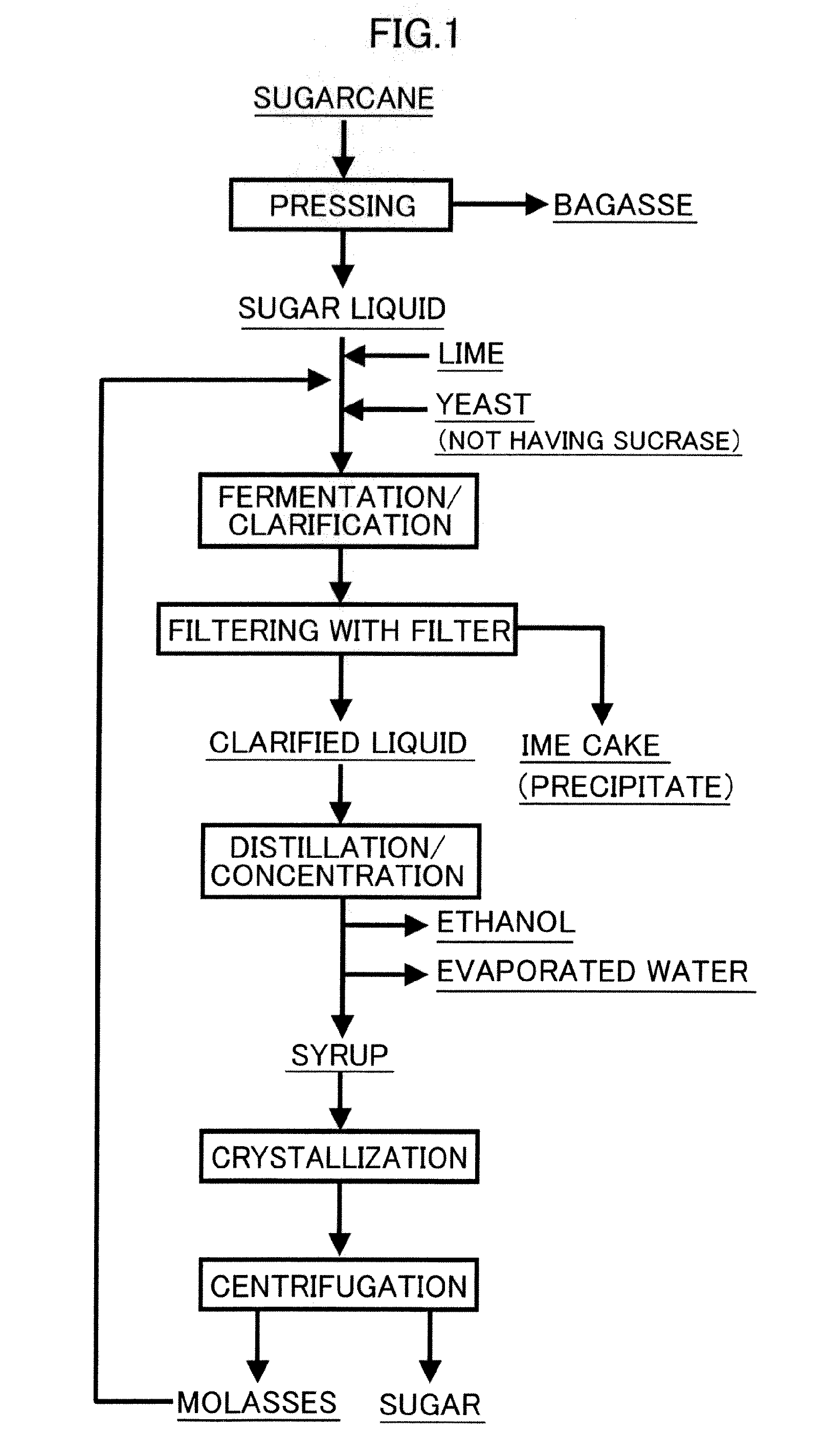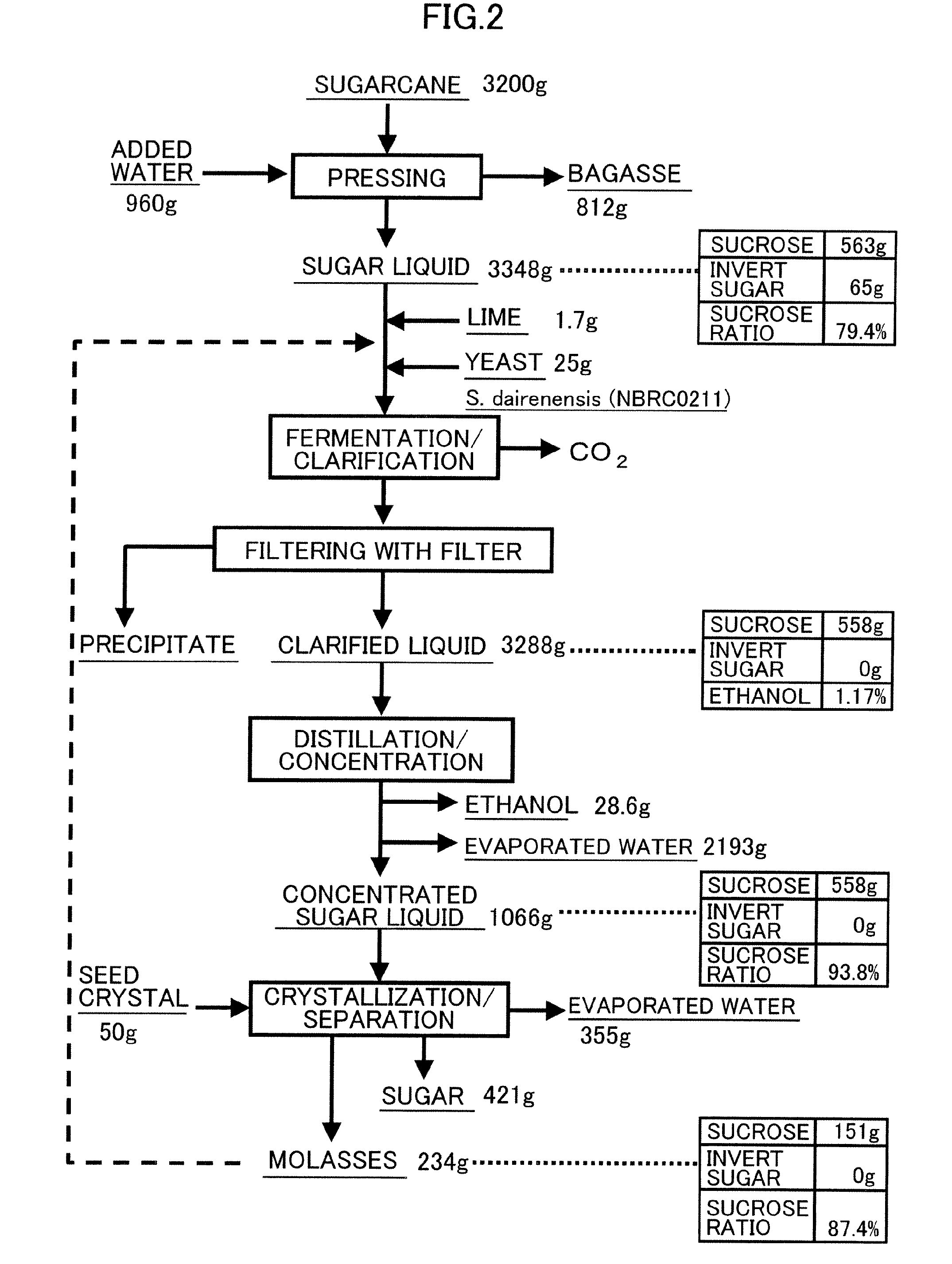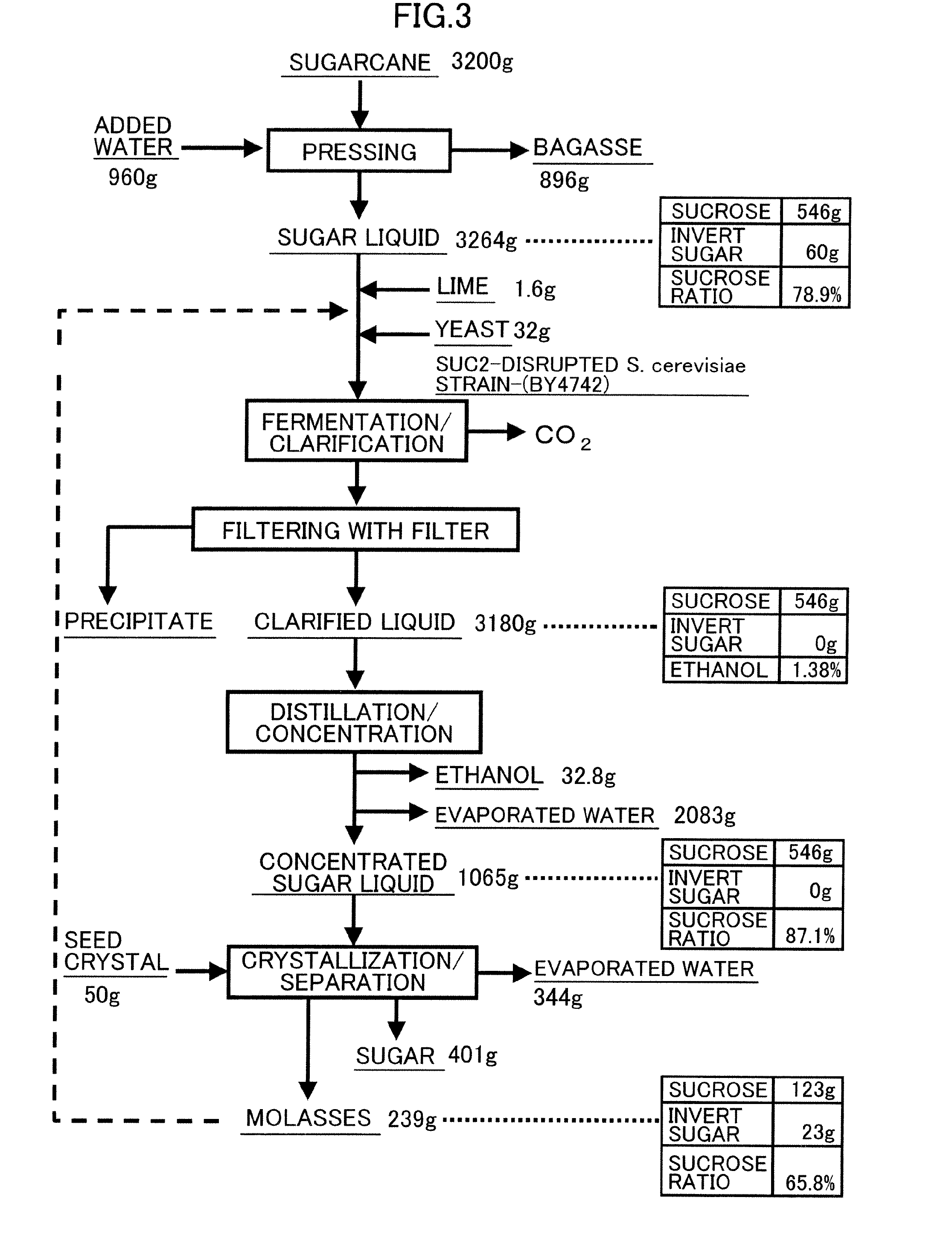Method for Producing Sugar
a production method and sugar technology, applied in the field of sugar production method, can solve the problems of reducing the yield of sugar crystals, the above method is very ineffective in energy, and the sugar crystallization process is very ineffective, so as to achieve the effect of efficient production of ethanol and low sugar concentration and salinity
- Summary
- Abstract
- Description
- Claims
- Application Information
AI Technical Summary
Benefits of technology
Problems solved by technology
Method used
Image
Examples
example 1
Process Verification for Case of Using Sugarcane as Raw Material and Yeast not having Sucrase
[0022](1) Pressing Step
[0023]Cane stem portions, weighing 3200 g, of a sugarcane (NiF8) after harvest were shredded with a shredder, and then pressed with a four-roll mill. Thereby, 3114 mL of a pressed juice was obtained (pressed juice weight=3348 g, sucrose content=563 g, invert sugar content=65 g, sucrose ratio=79.4%).
[0024](2) Clarification / Fermentation Steps
[0025]The pressed juice was transferred to a 5-L jar fermentor, and hydrated lime Ca(OH)2 of 0.05% by weight relative to the weight of the pressed juice was added thereto for the pH adjustment and aggregation of impurities. Then, 0.3 g in dry weight of yeast Saccharomyces dairenensis (NBRC 0211) not having sucrase was planted therein for ethanol fermentation under anaerobic conditions at 30° C. for 3 hours. The yeast precultured in advance in a YM medium was used. After the fermentation was completed, the yeast and the aggregated imp...
example 2
Process Verification for Case of Using Sugarcane as Raw Material and Sucrase-Gene-Disrupted Strain
[0033](1) Pressing Step
[0034]Cane stem portions, weighing 3200 g, of a sugarcane (NiF8) after harvest were shredded with a shredder, and then pressed with a four-roll mill. Thereby, 3000 mL of a pressed juice was obtained (pressed juice weight=3264 g, sucrose content=546 g, invert sugar content=60 g, sucrose ratio=78.9%).
[0035](2) Clarification / Fermentation Steps
[0036]The pressed juice was transferred to a 5-L jar fermentor, and hydrated lime Ca(OH)2 of 0.05% by weight relative to the weight of the pressed juice was added thereto for the pH adjustment and aggregation of impurities. Then, 0.3 g in dry weight of yeast strain Saccharomyces cervisiae BY4742 whose sucrase gene SUC2 was disrupted was planted therein for ethanol fermentation under anaerobic conditions at 30° C. for 3 hours. The disrupted strain precultured in advance in a YM medium was used. After the fermentation was complete...
example 3
Process Verification for Case of Using Sugarcane as Raw Material and Sucrase Inhibitor
[0044](1) Pressing Step
[0045]Cane stem portions, weighing 3000 g, of a sugarcane (NiF8) after harvest were shredded with a shredder, and then pressed with a four-roll mill. Thereby, 2868 mL of a pressed juice was obtained (pressed juice weight=3120 g, sucrose content=524 g, invert sugar content=61 g, sucrose ratio=78.3%).
[0046](2) Clarification / Fermentation Steps
[0047]The pressed juice was transferred to a 5-L jar fermentor, and hydrated lime Ca(OH)2 of 0.05% by weight relative to the weight of the pressed juice was added thereto for the pH adjustment and aggregation of impurities. After methyl-α-D-glucopyranoside serving as a sucrase inhibitor was added thereto at a concentration of 60 mM, 0.6 g in dry weight of yeast Saccharomyces cervisiae (Taiken 396 strain) having sucrase was planted therein for ethanol fermentation under anaerobic conditions at 30° C. for 6 hours. The yeast precultured in adv...
PUM
 Login to View More
Login to View More Abstract
Description
Claims
Application Information
 Login to View More
Login to View More - R&D
- Intellectual Property
- Life Sciences
- Materials
- Tech Scout
- Unparalleled Data Quality
- Higher Quality Content
- 60% Fewer Hallucinations
Browse by: Latest US Patents, China's latest patents, Technical Efficacy Thesaurus, Application Domain, Technology Topic, Popular Technical Reports.
© 2025 PatSnap. All rights reserved.Legal|Privacy policy|Modern Slavery Act Transparency Statement|Sitemap|About US| Contact US: help@patsnap.com



